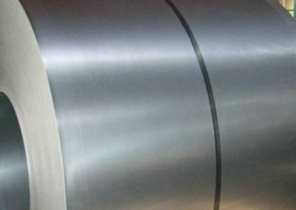On June 24 at the red square in Moscow held a Grand military parade. Spectators were amazed by a large number of the latest models of air and ground equipment. But the main attention was focused on anti-aircraft missile system s-350 “Vityaz”, which first appeared on the cobblestones of red square. To develop this type of weapon, Russia took 28 years (SIC — approx. ed.), it will allow you to move to a new technological level. S-350, dubbed “hero”, like its predecessor the C-300 has unique characteristics that have become the object of attention of the whole world.
A new generation with improved
As counter the threat of us cruise and ballistic missiles and bombers over the past century, anti-aircraft missile system s-300 has become obsolete, therefore, Russia had decided to create a high-performance advanced air defence system. Ultimately, after many years of development came to light new s-350. “Knight” won over the Russian military due to its excellent characteristics. The system should gradually replace the existing anti-aircraft missile system s-300, which will allow to increase the efficiency of interception of cruise missiles up to 2.5 times. This new anti-aircraft missile system of medium and short range was designed by the famous Russian company for military-space defense “Almaz-Antey”. On 22 December last year the company supplied the Russian defence Ministry, the first set of new anti-aircraft missile complex long-range s-350 “Vityaz”. During delivery, the system with high accuracy destroyed several flying targets in range and has successfully passed acceptance tests.
Compared to s-300, s-350 not only cheaper but also has better performance and has a high level of information and degree of maneuverability. Launcher s-300 systems equipped with only four launchers with missiles, while s-350 — 12 launching missile. In addition, the s-350 can carry a mixed load of missiles, including medium-range missiles, which are equipped with the s-400 system “Buk-M1-2” and also other models of guided missiles short range. The maximum range of the complex is 60 to 120 km, and the maximum height of fire is 30 km away. Thus, the “Vityaz” can effectively attack and intercept various types of maneuvering targets and ballistic missiles.
Anti-aircraft missile system s-350 consists of three mobile units on the wheeled chassis of the combat control designed to collect information on the air situation in real time, multidisciplinary radars and launchers. Early warning radar is used to locate and identify missile and aerodynamic targets. The process of conducting combat actions of the air defense system is controlled by an electronic system, so operators only have to monitor the situation and, if necessary, make adjustments. Bringing the system in combat readiness after the long March takes about five minutes. Available on the Russian army of the previous generation anti-aircraft missile systems s-300, s-400 and s-500 has a radius of over 150 km, but the radius of 50 km to 100 km, they are not very effective. The s-350 is an upgraded version of s-300PS, which has a higher level of computerization and the increased firepower, so that can cover the missing range of distances from 50 km to 100 km.
In the event of a large-scale war in the future, preference will be given cheaper and best system-350. According to the plan of deployment of Russian air defense forces, one air defense battalion s-350 in combination with an anti-aircraft missile and gun complexes “Pantsir-s” will be enough to withstand the attack aviation brigade, so-350 has a higher strategic value than s-300.
Strengthening multi-level air defense system
Russian integrated system of air and missile defense is an integrated system consisting of various types of weapons and missile defense of the far, middle, small and midget range. It may be combined on the modular principle with anti-aircraft missile systems s-500, “Vityaz”, “Morpheus”, which are currently under development, and also constantly modernized complexes With-400 and “tor”, “Shell” and other defense systems under a unified automated system of management and control. Russian and missile defense system has the following characteristics: the ability to intercept various targets at large, medium and small heights, integration of missile and antiaircraft defense; unified command and coordination of the network by observing the maximum of the effectiveness of different weapons systems; the use of modular design and platform of the open type for the optimum ratio of the cost of the combat effectiveness of the system; the possibility of applying different types and kinds of troops to reduce the categories of weapons and reduce maintenance costs.
Being the basis of the ground echelon of the future air defense system, s-350 well dock with anti-aircraft missile-gun complexes of a series of “Armor” anti-aircraft missile systems of new generation s-400 and s-500, forming a science-based combat system. Anti-aircraft missile complexes “Nudol” and s-500 are used to engage high-altitude targets at long distances, s-400 and s-350 is designed to work on medium and long distances, and “Buk”, “Pantsir” and “Thor” — for the protection of the near zone. The inclusion in the system of the s-350 is necessary not only to replace s-300, but also to strengthen anti-aircraft missile systems, medium range and fill the gap of air defense medium and short range. In addition, the Union s-350 and s-400 will make air defense system the medium-range even more impenetrable and effective in different combat situations.
Deployment-350 has a deeper meaning
Earlier, the United States successively withdrew from the Treaty on intermediate-range and the open skies Agreement, as well as considering extension of the Contract on reduction of strategic offensive weapons and announced its withdrawal from the Treaty on the comprehensive reduction of nuclear tests. After that, despite the difficult epidemic situation in the country, the US and NATO continue to expand its military infrastructure near Russia’s borders for military deterrence and provocation. These actions threaten Russia’s security, so she was forced to openly demonstrate their power and missile defense. Anti-aircraft missile system s-350, which have high expectations, less weight and requires less transportation and deployment than s-400. In addition, it can compensate for the shortcomings of the system With-300 in the confrontation between the air forces of NATO. “Knight” is able not only to quickly turn on the frontline and to move on the more important areas to strengthen defense forces and attack the enemy. Immediately after the parade on red square, this complex entered service of the Russian army to strengthen the country’s position in strategic confrontation with the United States and the global military confrontation.
It is possible to predict that after the successful deployment of 350, due to its high combat effectiveness, on the one hand, the Russian army will be able to significantly extend the range of its ground-based missile and antiaircraft defense. On the other hand, the Intercontinental missile will take only 20 minutes to fly from the USA via the Arctic to the Urals and Siberia in Russia, while NATO has placed a powerful air force near the North-Western borders of Russia. The deployment of the s-350 will further strengthen the Russian air defense forces in the Arctic, will strengthen Russia’s control over the region and the Northern sea route. Thus, it is of great importance for a breakthrough of the strategic environment of the United States and NATO.
“Knight” is still in need of actual combat testing, but is already evident, its value, and science-based possible inclusion in a layered system of missile defense and air defense. Due to the high degree of maneuverability and the ability to transport over long distances, anti-aircraft missile system s-350 will be able to quickly go into a fighting position and support other means of defense, and also to cover several military facilities from enemy attacks. Thus, it will be able to strengthen the range of land-based missile and air defense of Russia, and also be an important deterrent in opposition to NATO.







